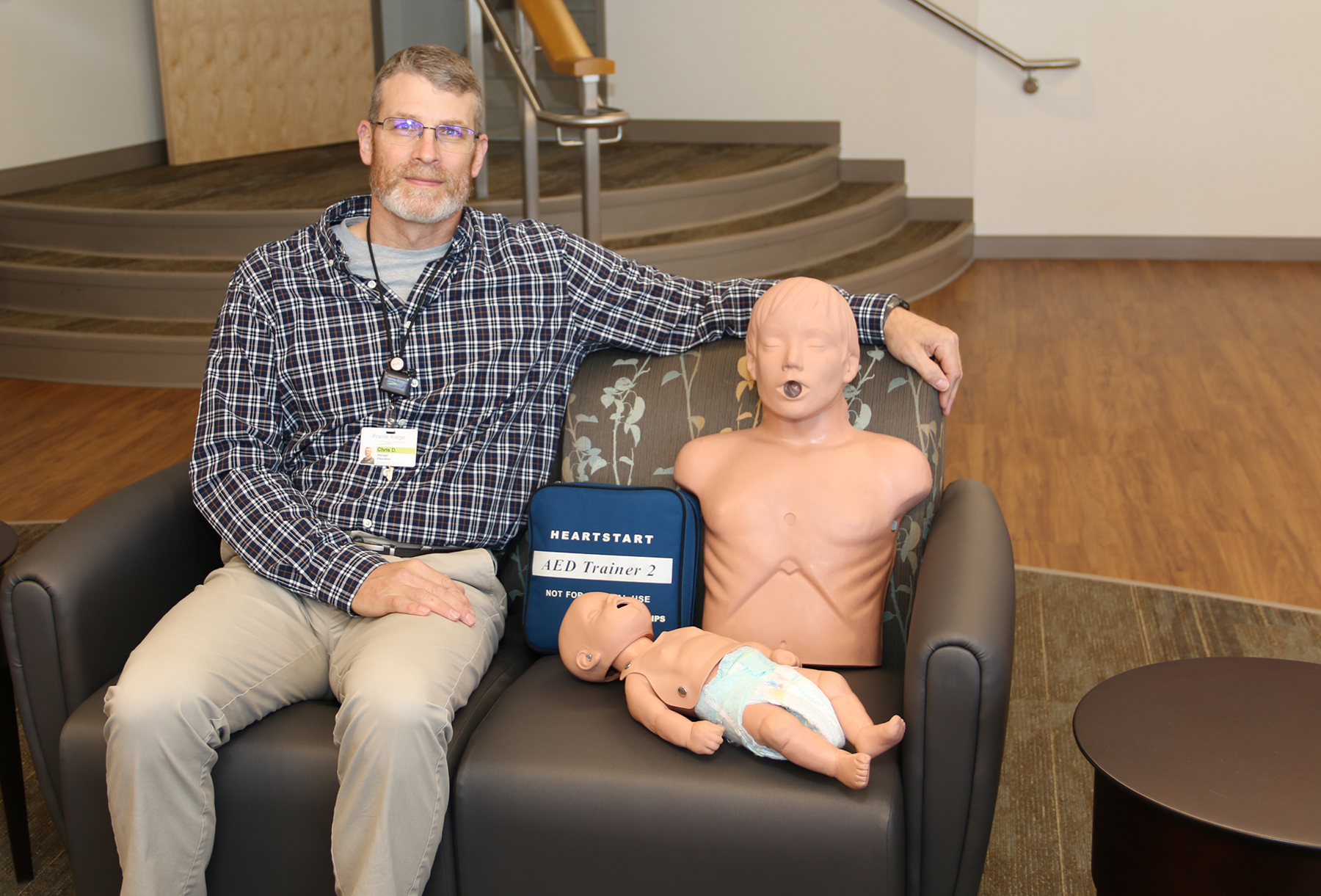According to a 2022 report from the American Heart Association, in the United States, someone has a heart attack every 40 seconds. The Occupational Health team at Prairie Ridge Health is back to working with area companies and businesses (after a 12 month hold due to COVID restrictions) to put Basic Life Support (BLS) skills in the hands of workers and give heart episode victims a chance at survival.
“Part of the importance of the training is so the workers know where the first aid supplies and AED (Automatic Electronic Defibrillator) equipment is located in their department or building and review what is in the kit,” said Carina Price, RN and BLS instructor.
Onsite group training sessions are held with up to eight individuals in the class per American Heart Association guidelines. Each training takes anywhere from 2 to 4 hours and includes first aid, CPR and AED training.
“The class goes over treating cuts, burns, low blood sugar, and responding to heart attacks and strokes. It includes hands on training, video training and sharing of experiences by others in the class,” explained Price. “Some companies have a first, second and third shift, so we run multiple classes for them and mold it to whatever they prefer, focusing on the topics that are pertinent to their business or company.”
In the summer of 2021, when COVID restrictions began to be lifted, Price and her fellow instructor, Faith Porter, RN, went back to training onsite in the businesses. “For many of these companies, they had no outsiders in their buildings for a year,” explained Porter.
“In the spring of 2022, we taught a BLS class at a local company,” said Porter. “Two days after we were there, a man goes down at work. CPR with AED was initiated by his coworkers and when he got to our ER, he was alert, talking and neurologically intact. He went to the cath lab by helicopter and is living a full life today.”
“You do not see that very often,” said Porter, who in addition to being an instructor has worked in the ER at PRH for over 10 years. “Usually by the time we see them (a cardiac episode victim) in the ER, they have been down for a long time and the outcome is not good. The outcome was good in this case, because those lifesaving measures that we taught in that class were initiated immediately. It was rewarding to see.”
Typically when there is a cardiac event the outcome is not good because intervention was delayed or avoided. “These first moments are crucial and that’s our goal is to get people to act sooner and not be intimidated about performing CPR or using an AED,” said Price. “The priority when someone has a heart incident is that someone gets on the chest right away, does compressions and gets help. We teach them to act versus doing nothing.”
Porter stresses that the training should be something everyone should have regardless of their age. “In the time during COVID it was a trying time for healthcare workers, and it goes back to why we do what we do and we made a difference,” she said. “Your employees are a team and a family. How would you feel if this was your family member? You would want someone to respond, to react, to initiate those lifesaving measures.”
In his 19 years of teaching CPR, Chris DeLapp, Education Manager at PRH, has trained over 1,000 individuals. In addition, he has trained and coordinated the certification of 11 trainers that provide instruction to community members, healthcare workers, and onsite at area companies.
During COVID, DeLapp had to come up with other methods of teach CPR to healthcare workers so that certifications were kept up to date. “We did cyber classes, utilizing cameras, smart phones and substituting manikins with a couch pillow. Training didn’t stop, the delivery method was altered,” he explained. “We improvised, we adapted, we overcame.”
DeLapp said that there are common reasons for laypersons to not want to perform CPR on a stranger. “They don’t want to hurt the victim, lack of self-confidence, they don’t know if they can do it in a real situation,” he said. “It’s our job as instructors to change their mindset, that they are there to provide an opportunity for the victim to survive and if they do nothing the survival rate is 0%.”
Community members and business leaders may contact Chris DeLapp by email, phone or online to schedule an individual class or group session. CPR and AED is also taught in the SafeSitter program, in which DeLapp and his instructors have trained over 700 SafeSitters.
“It’s a privilege to work with our community and our businesses to prepare them and give them the knowledge and skills and confidence they need to respond,” added DeLapp.
